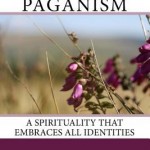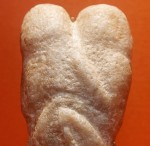The ‘subjective turn’
The theory of subjectivisation proposes that “’the massive subjective turn of modern culture’ favours and reinforces those (subjective-life) forms of spirituality which resource unique subjectivities and treat them as a primary source of significance, and undermines those (life-as) forms of religion which do not.” (Heelas and Woodhead, 2005: 78)
‘Subjective-life’ is life lived as an unique individual with an emphasis on self-expression, whereas ‘life-as’ is life lived according to a specific role or identity (wife, mother, Christian, etc.) The turn towards subjective-life has affected not only religion and spirituality, but also the world of work and the family (Heelas and Woodhead, 2005: 79).
‘Subjective-life’ spirituality is often characterised as a pick-and-mix approach (Stephenson, 2005), whereas practitioners of dual faith appear to desire fidelity to the traditions being followed (Corless, 1994: 182). Clearly, in feeling a vocation to follow both faiths, such practitioners are responding to a subjective inner feeling, but trying to do so within the framework of a tradition.
Heelas and Woodhead (2005) make much of the oppositional tension between ‘subjective-life’ spirituality and ‘life-as’ religion, but Thomas (2000: 42) suggests that the distinction between spirituality and religion – the “assumption that whereas religion deals with the outer life, that is, institutions, traditions, practices, doctrines, and moral codes, spirituality treats the inner life, which thus tends to be individualized and privatized” – may in fact be a false dichotomy, arising out of Western discourse. Taylor (1989: 111) explains:
In our language of self-understanding, the opposition “inside-outside” plays an important role. We think of our thoughts, ideas, or feelings as being “within” us, while the objects in the world which these mental states bear on are “without.”
. . . But strong as this partitioning of the world appears to us, as solid as this localization may seem, and anchored in the very nature of the human agent, it is in large part a feature of our world, the world of modern, Western people. (cited in Thomas, 2000: 42-43)
Thomas (2000: 43) adds that there is both a tradition of inwardness and a tradition of outwardness in Christianity, but argues that the outward should be considered primary, and a major source of the inner.
‘Subjective-life’ spirituality seems mainly focused on the inner as the primary source for validating experience. Hence it is likely to conflict with solely outward-focused religions (Heelas and Woodhead, 2005: 18).
However, dual-faith practitioners seem to be answering an inner call whilst attempting to be faithful to the whole of their chosen traditions. Corless (1994: 181) says:
Both Buddhism and Christianity recommend that practice be done for others rather than oneself … Insofar as the coinherence practitioner looks for the practice to aid him- or herself on the way to salvation or liberation, or to be of benefit to oneself in any way whatever, just to that extent is one’s practice faulty, deficient, or sinful. Insofar as the coinherence practitioner seeks only to be of service to the Christian and Buddhist traditions, and whatever aims they wish to set forward, just to that extent is one’s practice meritorious, authentic, and righteous.
What is significant about this passage is the way in which Corless denies that the practice is intended to be of benefit to himself; instead it is about benefiting others, whereas ‘subjective-life’ spirituality is usually about self-development.
In a discussion of her dual-faith practice of being a Quaker and a Pagan, Cat Chapin-Bishop (2007) says:
But that’s just what keeps me Quaker — we center down, and I can find you, Friend, in the shining place: you and the sea of limitless Light. And that’s what keeps me Pagan — I go out into the woods, and the trees are not things but friends, and the moonlight makes what is sacred shine out all around me.
…. No matter how the labels fit or don’t fit, my job is to keep walking… just keep walking. … Just… keep going the way I’m led.
(“But I wanna be in the Quaker club, too, dammit. Why don’t I ever get to sit at the cool kids’ table?” A small voice asks. Shut up, voice. This isn’t about that. Keep walkin’.)
Here, it seems, the emphasis is on the path rather than on the one walking it, and on making connections with others which is as important as the inner sense of vocation.
Peter Chapin-Bishop (2007), also a Quaker Pagan, echoes the idea that the Divine is outside and permeating inwards, and is more important than the social norms and conventions of the respective faiths, and that the core or defining aspect of belonging to the tradition is that a connection to the numinous happened in that context:
God (the Divine, the Gods…whatever you want to call Him/Her/It/Them) calls to us. Divinity “bleeds through” from the realm of the Divine into our world. … When I say I am a Quaker, it is because I have been a conduit for the Divine in that context. Once I’d had the experience of…well, call it “drawing down the Light,” the rest was just a formality. My clearness committee tested that leading and concurred, but I’m not a Quaker because they said so. I’m a Quaker because I listened for the presence of Spirit in the silence, and It spoke through me, and that’s what Quakers do. Just like I’m Wiccan because I invoked the presence of the God in circle and He came to me, and that’s what Wiccans do.
What these people are doing does not seem to be ‘pick’n’mix’ spirituality, or even dvoeverie (the practice of two faiths side by side without any mutual feedback – if this is even possible). It is much more like Corless’s idea of coinherence, whereby the two traditions mutually inform and enrich each other, and somehow this is of service to both communities, or it involves serving the Divine, which encompasses both people and nature. Corless makes it clear that the practice of coinherence is painful, not something that anyone should choose deliberately (Corless, 1994: 181). The concept of walking a path, or being led, crops up several times in these writings. Their spirituality is not merely eclectic or inner-directed (‘subjective-life’), nor is it entirely outwardly directed (‘life-as’): it is about the connection of inner realities with outer numinosity.
From the evidence of people’s explanations of what they are doing in their coinherence practices, it would seem that they may well be evidence for the ‘subjective turn’, but that the practitioners are not entirely subjectively led or inner-directed, as they still feel the need for a community of practice and have a sense of the external promptings of the numinous.
This article was originally published in the Unitarian journal, Faith and Freedom.















